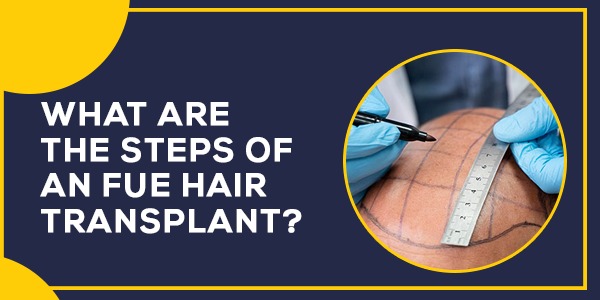An FUE hair transplant is a surgical procedure that involves transplanting hair to bare or thinning areas of the scalp. This procedure is especially suitable for those patients who have tried every other hair loss treatment.
How does an FUE hair transplant procedure work?
The hair transplant surgeon takes grafts from areas of the body with healthy hair. Healthcare providers refer to this location as the donor site. It usually appears on the back of your scalp, where your hair is thickest. The healthcare expert places the grafts in bald parts of the scalp. After the transplanted skin heals, hair should regrow.
Here is the step-wise procedure for how FUE Hair transplant in Raipur is conducted:
Step 1 -Consultation
Your consultation is the initial step in having an FUE Hair Transplant in Raipur. Your session may begin with one of our patient advisors, who are very knowledgeable about the treatment and can answer many of your questions. Before you can schedule your treatment, you must first meet with one of our hair transplant surgeons.
Step 2 -Preparing the scalp
You may be required to shave your hair as your surgery date approaches. Some people choose to do this gradually in the months preceding their operation date, while others prefer to do it on the day of the procedure. Your hair transplant surgeon can match the natural angle and direction of native hairs with a shaved head. But, in rare circumstances, a partially shaved or unshaven hair transplant is conceivable, and this can be discussed and agreed upon during your appointment for Hair Transplant Surgery in Raipur.
Step 3 – Applying Anesthesia
Anaesthesia will be applied to your scalp before surgery to make hair extraction and grafting painless and comfortable for the patient. This process may sting at first, but many individuals are surprised by how rapidly it works and has an effect.
Step 4 – Follicular Unit Extraction
To begin an FUE Hair Transplant procedure, a specialized punch device with a diameter ranging from 0.6mm to 0.9mm is used to puncture the skin around the follicle 1-2 mm from the surface of the scalp, and the hair follicle bulb is then extracted using a fine forceps to ensure precision along with a Magnifying glass. Once the hair follicle bulb has been extracted, it is placed in a glass tray and immersed in a solution to maintain a constant level of hydration, temperature, and humidity until the extraction procedure is complete.
Step 5– Collecting the Grafts for implantation
Once the extraction procedure is completed, you will normally be offered a lunch break where you will be able to stretch your legs and eat something. During this time, your surgeon will begin to study the retrieved grafts and determine which are appropriate for usage and which are not. They are then divided into groups based on thickness, bulb size, and the number of hairs to ensure that there is enough diversity to offer the patient the most natural-looking result possible.
Step 6: The grafts are implanted.
Once your surgeon and their team have chosen all of the grafts, you will be ready for the FUE Hair Transplant procedure’s insertion stage. Your hair transplant surgeon will now individually implant each follicle into the recipient area of the scalp. The implanter tool will first penetrate the epidermis before placing the hair follicle bulb into the scalp’s intradermal layer 1mm below the surface. The number of hair transplants put in will vary from patient to patient, and in some situations, this step of the process may take several hours.
Recovery and results
Most hair transplant surgeries are performed as outpatient procedures, which means you can go home the same day. Your hair transplant surgeon may allow you to do the following in the days following surgery:
Day 1: Remove the bandages.
Day 2: Shampoo your hair.
Days 3-5: Return to work and start with light day to day activities
After 10 days, the stitches should be removed (done by your healthcare provider).
Risks associated with hair transplant surgery in General:
Hair transplant surgery frequently results in short-term side effects. The following symptoms may appear on your scalp, at the donor site, or where new hair is growing:
- Scabs or crust
- Itching.
- Feelings are lost.
- The sensation of pain or throbbing.
- Swelling.
- Tightness.

